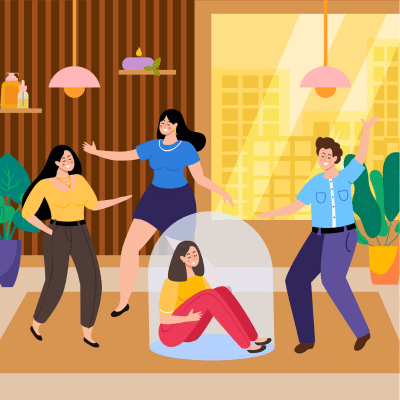In the modern workplace, the concept of Employee Recognition has evolved into a pivotal force that shapes employee morale and performance. This article delves into various aspects of employee recognition, its impact on performance, and how to enhance it effectively.
What Is an Employee Recognition?
At its core, employee recognition is the practice of acknowledging and appreciating the efforts and achievements of employees within an organization. It goes beyond the routine paycheck and job description, aiming to create a positive and motivating work environment.
Employee Recognition: The Key to Boosting Morale and Performance
In the modern workplace, the concept of Employee Recognition has evolved into a pivotal force that shapes employee morale and performance. This article delves into various aspects of employee recognition, its impact on performance, and how to enhance it effectively.
What Is an Employee Recognition?
At its core, employee recognition is the practice of acknowledging and appreciating the efforts and achievements of employees within an organization. It goes beyond the routine paycheck and job description, aiming to create a positive and motivating work environment.
Recognition can take various forms, including verbal praise, awards, bonuses, promotions, or even a simple ‘thank you’ note. It’s all about making employees feel valued and appreciated for their contributions.
Components of Employee Recognition
Effective employee recognition programs are built on several key components, each contributing to their success. These components provide a structured framework for organizations to acknowledge and appreciate their employees’ efforts effectively.
1. Clear Objectives
To start, organizations must establish clear objectives for their recognition programs. These objectives define the purpose and goals of recognition, ensuring that it aligns with the company’s overall mission and values. Whether it’s boosting morale, improving performance, or enhancing employee engagement, having well-defined objectives sets the stage for success.
2. Recognition Criteria
Recognition criteria outline the specific behaviors, achievements, or contributions that warrant acknowledgment. These criteria should be transparent and communicated to all employees. Clear criteria ensure that recognition is fair and consistent, leaving no room for ambiguity.
3. Timeliness
Timeliness is crucial in recognition. Delayed recognition can diminish its impact. Organizations should strive to acknowledge and reward employee efforts promptly, reinforcing the connection between the action and the recognition.
4. Personalization
Effective recognition programs consider individual preferences. What motivates one employee may differ from another. Personalization allows organizations to tailor their recognition efforts to match each employee’s preferences, making the recognition more meaningful.
5. Consistency
Consistency is key to sustaining a culture of recognition. Recognition should not be a one-time event but a continuous practice embedded in the organizational culture. Consistent recognition reinforces the value of employee contributions.
6. Inclusivity
Inclusivity ensures that all employees, regardless of their position or role, have the opportunity to be recognized. Recognizing diverse talents and contributions promotes a sense of belonging and equality within the organization.
The Impact of Recognition on Employee Performance
Recognition isn’t just a feel-good gesture; it has a profound impact on employee performance. When employees feel recognized and appreciated, several positive outcomes emerge:
Increased Motivation
Recognized employees tend to be more motivated to excel in their roles. They see their efforts as meaningful and aligned with the organization’s goals. This motivation can translate into improved productivity and a stronger work ethic.
Enhanced Job Satisfaction
Employee recognition contributes significantly to job satisfaction. When employees feel that their hard work is acknowledged and rewarded, they are more likely to derive satisfaction from their jobs. This, in turn, reduces turnover rates and helps retain top talent.
Improved Morale
Recognition has a direct correlation with employee morale. It lifts spirits and creates a sense of belonging and pride within the organization. High morale often leads to a positive workplace culture, where employees support each other and collaborate effectively.
Greater Engagement
Engaged employees are more committed to their work and the company’s success. Recognition serves as a catalyst for engagement, as it fosters a deeper connection between employees and their roles. Engaged employees are also more likely to go the extra mile when needed.
Picking Which Behavior of Employees To Recognize?
Selecting which employee behaviors to recognize is a critical aspect of any recognition program. Effective recognition programs target behaviors that align with organizational goals and values while also fostering a positive work environment.
1. Performance Excellence
Recognizing and rewarding outstanding job performance is a common practice. This includes achieving exceptional results, exceeding targets, and consistently delivering high-quality work. Acknowledging performance excellence encourages employees to continue striving for excellence.
2. Innovation and Creativity
Innovation is often a key driver of success in today’s competitive landscape. Recognizing employees who contribute innovative ideas, implement creative solutions, or take calculated risks can fuel a culture of innovation within the organization.
3. Collaboration and Teamwork
In collaborative workplaces, recognizing employees who excel in teamwork and collaboration is essential. This includes acknowledging those who foster a positive team dynamic, mentor colleagues, or contribute to a culture of cooperation.
4. Leadership and Mentorship
Recognizing leadership qualities is crucial for identifying potential future leaders within the organization. Employees who exhibit leadership skills, mentor others, or take on leadership roles in projects should be acknowledged.
5. Customer Service Excellence
For customer-centric organizations, recognizing employees who provide exceptional customer service is paramount. This includes acknowledging those who go the extra mile to meet customer needs and exceed expectations.
6. Adaptability and Resilience
In rapidly changing environments, adaptability and resilience are valuable traits. Recognizing employees who adapt to change, handle adversity effectively, and maintain a positive attitude can inspire others to do the same.
Theoretical Foundation of Employee Recognition
Employee recognition is not merely a practical approach; it also has a solid theoretical foundation rooted in psychology and organizational behavior. Understanding the theoretical underpinnings can help organizations design more effective recognition programs.
1. Maslow’s Hierarchy of Needs
Abraham Maslow’s Hierarchy of Needs theory posits that individuals have a hierarchy of needs, ranging from basic physiological needs to higher-order needs like self-esteem and self-actualization. Employee recognition fulfills the need for social recognition and esteem, motivating employees to excel in their roles.
2. Expectancy Theory
Victor Vroom’s Expectancy Theory suggests that individuals are motivated to perform when they believe their efforts will lead to desired outcomes. Employee recognition acts as a positive reinforcement, increasing the perceived likelihood of receiving rewards and thus motivating employees to perform well.
3. Equity Theory
Equity Theory, developed by J. Stacy Adams, asserts that employees compare their input (effort and contributions) to their outcomes (rewards and recognition) and gauge fairness based on these comparisons. Employee recognition helps maintain perceived fairness, motivating employees to continue contributing to the organization.
4. Self-Determination Theory
Self-Determination Theory, proposed by Edward Deci and Richard Ryan, posits that individuals are more motivated when they feel autonomous, competent, and related to others. Employee recognition fosters a sense of relatedness by acknowledging employees’ efforts and contributions, thus enhancing their intrinsic motivation.
Employee Recognition Statistics 2023
To shed light on the current landscape of employee recognition, let’s explore some compelling statistics for the year 2023:
- 74% of employees believe that they would work harder if their efforts were better recognized.
- 83% of HR professionals agree that recognition programs have a positive impact on employee engagement.
- Companies with a strong culture of recognition are 32% more likely to improve their employee retention rates.
- 69% of employees say they would work harder if they felt their efforts were better appreciated.
- 87% of organizations have reported a positive impact on employee morale after implementing recognition programs.
These statistics underscore the critical role of employee recognition in today’s workplace and highlight its potential to drive positive change.
How To Improve Employee Recognition
Now that we understand the significance of employee recognition, let’s explore how organizations can enhance their recognition efforts effectively:
1. Clear Recognition Criteria
Establish clear criteria for recognition. Ensure that employees know what kind of performance or behavior merits acknowledgment. Clarity in expectations makes recognition more meaningful.
2. Timely Recognition
Don’t wait too long to recognize achievements. Timely recognition reinforces the connection between the action and the reward, making it more effective.
3. Personalization
Recognize employees in a way that resonates with them personally. Some may prefer public recognition, while others may value a private “thank you.” Tailor your approach to individual preferences.
4. Consistency
Recognition should be a consistent practice, not an occasional event. Regular acknowledgment of efforts reinforces a culture of appreciation.
5. Inclusive Recognition
Ensure that recognition extends to all employees, regardless of their position or seniority. Inclusivity promotes a sense of fairness and equality.
6. Employee Involvement
Involve employees in the recognition process. Encourage them to nominate their peers for recognition, fostering a culture of peer-to-peer appreciation.
What Is the Key to Motivating Employees and Boosting Their Morale?
While employee recognition plays a vital role in motivation and morale, it’s not the sole factor. The key to motivating employees and boosting their morale is a holistic approach that encompasses several elements:
1. Effective Leadership
Strong leadership that communicates a clear vision, provides support, and listens to employee concerns is crucial for employee motivation. Employees need to feel that their leaders are invested in their success.
2. Opportunities for Growth
Employees are motivated when they see opportunities for personal and professional growth within the organization. Training, mentorship, and clear career paths all contribute to higher morale.
3. Work-Life Balance
A healthy work-life balance is essential for employee well-being. Employers who respect this balance and offer flexible work arrangements often have more motivated and satisfied employees.
4. Recognition and Rewards
As discussed earlier, recognition and rewards are potent motivators. They make employees feel valued and appreciated, driving them to perform at their best.
5. Collaborative Culture
A workplace that fosters collaboration and teamwork creates a positive environment. Employees who feel supported by their colleagues are more likely to be motivated and engaged.
Recognition At Work Examples
Let’s dive into some real-life examples of effective employee recognition:
1. Employee of the Month
Many organizations have an “Employee of the Month” program. This initiative recognizes outstanding employees and often includes a bonus, a featured parking spot, or a special plaque.
2. Peer-to-Peer Recognition
Some companies encourage employees to recognize their colleagues’ achievements. This peer-to-peer recognition can take the form of shout-outs in team meetings or dedicated platforms for such acknowledgments.
3. Annual Awards Ceremony
An annual awards ceremony can be a grand event where employees are celebrated for their achievements throughout the year. Awards can include “Employee of the Year,” “Innovator of the Year,” and more.
4. Personalized Thank You Notes
A simple but effective form of recognition is a personalized thank-you note from a manager or colleague. Handwritten notes can carry a personal touch that digital communication lacks.
5. Career Development Opportunities
Offering career development opportunities, such as sponsoring additional training or certifications, is a powerful way to recognize an employee’s potential and dedication.
Conclusion
Employee recognition is a cornerstone of a motivated and high-performing workforce. It positively impacts motivation, job satisfaction, morale, and engagement. By understanding its significance and implementing effective recognition strategies, organizations can foster a culture of appreciation that benefits both employees and the company as a whole. As the statistics suggest, the impact of employee recognition in 2023 is more significant than ever, making it a priority for forward-thinking organizations seeking success in the competitive business landscape.
Components of Employee Recognition
Effective employee recognition programs are built on several key components, each contributing to their success. These components provide a structured framework for organizations to acknowledge and appreciate their employees’ efforts effectively.
1. Clear Objectives
To start, organizations must establish clear objectives for their recognition programs. These objectives define the purpose and goals of recognition, ensuring that it aligns with the company’s overall mission and values. Whether it’s boosting morale, improving performance, or enhancing employee engagement, having well-defined objectives sets the stage for success.
2. Recognition Criteria
Recognition criteria outline the specific behaviors, achievements, or contributions that warrant acknowledgment. These criteria should be transparent and communicated to all employees. Clear criteria ensure that recognition is fair and consistent, leaving no room for ambiguity.
3. Timeliness
Timeliness is crucial in recognition. Delayed recognition can diminish its impact. Organizations should strive to acknowledge and reward employee efforts promptly, reinforcing the connection between the action and the recognition.
4. Personalization
Effective recognition programs consider individual preferences. What motivates one employee may differ from another. Personalization allows organizations to tailor their recognition efforts to match each employee’s preferences, making the recognition more meaningful.
5. Consistency
Consistency is key to sustaining a culture of recognition. Recognition should not be a one-time event but a continuous practice embedded in the organizational culture. Consistent recognition reinforces the value of employee contributions.
6. Inclusivity
Inclusivity ensures that all employees, regardless of their position or role, have the opportunity to be recognized. Recognizing diverse talents and contributions promotes a sense of belonging and equality within the organization.
The Impact of Recognition on Employee Performance
Recognition isn’t just a feel-good gesture; it has a profound impact on employee performance. When employees feel recognized and appreciated, several positive outcomes emerge:
Increased Motivation
Recognized employees tend to be more motivated to excel in their roles. They see their efforts as meaningful and aligned with the organization’s goals. This motivation can translate into improved productivity and a stronger work ethic.
Enhanced Job Satisfaction
Employee recognition contributes significantly to job satisfaction. When employees feel that their hard work is acknowledged and rewarded, they are more likely to derive satisfaction from their jobs. This, in turn, reduces turnover rates and helps retain top talent.
Improved Morale
Recognition has a direct correlation with employee morale. It lifts spirits and creates a sense of belonging and pride within the organization. High morale often leads to a positive workplace culture, where employees support each other and collaborate effectively.
Greater Engagement
Engaged employees are more committed to their work and the company’s success. Recognition serves as a catalyst for engagement, as it fosters a deeper connection between employees and their roles. Engaged employees are also more likely to go the extra mile when needed.
Picking Which Behavior of Employees To Recognize?
Selecting which employee behaviors to recognize is a critical aspect of any recognition program. Effective recognition programs target behaviors that align with organizational goals and values while also fostering a positive work environment.
1. Performance Excellence
Recognizing and rewarding outstanding job performance is a common practice. This includes achieving exceptional results, exceeding targets, and consistently delivering high-quality work. Acknowledging performance excellence encourages employees to continue striving for excellence.
2. Innovation and Creativity
Innovation is often a key driver of success in today’s competitive landscape. Recognizing employees who contribute innovative ideas, implement creative solutions, or take calculated risks can fuel a culture of innovation within the organization.
3. Collaboration and Teamwork
In collaborative workplaces, recognizing employees who excel in teamwork and collaboration is essential. This includes acknowledging those who foster a positive team dynamic, mentor colleagues, or contribute to a culture of cooperation.
4. Leadership and Mentorship
Recognizing leadership qualities is crucial for identifying potential future leaders within the organization. Employees who exhibit leadership skills, mentor others, or take on leadership roles in projects should be acknowledged.
5. Customer Service Excellence
For customer-centric organizations, recognizing employees who provide exceptional customer service is paramount. This includes acknowledging those who go the extra mile to meet customer needs and exceed expectations.
6. Adaptability and Resilience
In rapidly changing environments, adaptability and resilience are valuable traits. Recognizing employees who adapt to change, handle adversity effectively, and maintain a positive attitude can inspire others to do the same.
Theoretical Foundation of Employee Recognition
Employee recognition is not merely a practical approach; it also has a solid theoretical foundation rooted in psychology and organizational behavior. Understanding the theoretical underpinnings can help organizations design more effective recognition programs.
1. Maslow’s Hierarchy of Needs
Abraham Maslow’s Hierarchy of Needs theory posits that individuals have a hierarchy of needs, ranging from basic physiological needs to higher-order needs like self-esteem and self-actualization. Employee recognition fulfills the need for social recognition and esteem, motivating employees to excel in their roles.
2. Expectancy Theory
Victor Vroom’s Expectancy Theory suggests that individuals are motivated to perform when they believe their efforts will lead to desired outcomes. Employee recognition acts as a positive reinforcement, increasing the perceived likelihood of receiving rewards and thus motivating employees to perform well.
3. Equity Theory
Equity Theory, developed by J. Stacy Adams, asserts that employees compare their input (effort and contributions) to their outcomes (rewards and recognition) and gauge fairness based on these comparisons. Employee recognition helps maintain perceived fairness, motivating employees to continue contributing to the organization.
4. Self-Determination Theory
Self-Determination Theory, proposed by Edward Deci and Richard Ryan, posits that individuals are more motivated when they feel autonomous, competent, and related to others. Employee recognition fosters a sense of relatedness by acknowledging employees’ efforts and contributions, thus enhancing their intrinsic motivation.
Employee Recognition Statistics 2023
To shed light on the current landscape of employee recognition, let’s explore some compelling statistics for the year 2023:
- 74% of employees believe that they would work harder if their efforts were better recognized.
- 83% of HR professionals agree that recognition programs have a positive impact on employee engagement.
- Companies with a strong culture of recognition are 32% more likely to improve their employee retention rates.
- 69% of employees say they would work harder if they felt their efforts were better appreciated.
- 87% of organizations have reported a positive impact on employee morale after implementing recognition programs.
These statistics underscore the critical role of employee recognition in today’s workplace and highlight its potential to drive positive change.
How To Improve Employee Recognition
Now that we understand the significance of employee recognition, let’s explore how organizations can enhance their recognition efforts effectively:
1. Clear Recognition Criteria
Establish clear criteria for recognition. Ensure that employees know what kind of performance or behavior merits acknowledgment. Clarity in expectations makes recognition more meaningful.
2. Timely Recognition
Don’t wait too long to recognize achievements. Timely recognition reinforces the connection between the action and the reward, making it more effective.
3. Personalization
Recognize employees in a way that resonates with them personally. Some may prefer public recognition, while others may value a private “thank you.” Tailor your approach to individual preferences.
4. Consistency
Recognition should be a consistent practice, not an occasional event. Regular acknowledgment of efforts reinforces a culture of appreciation.
5. Inclusive Recognition
Ensure that recognition extends to all employees, regardless of their position or seniority. Inclusivity promotes a sense of fairness and equality.
6. Employee Involvement
Involve employees in the recognition process. Encourage them to nominate their peers for recognition, fostering a culture of peer-to-peer appreciation.
What Is the Key to Motivating Employees and Boosting Their Morale?
While employee recognition plays a vital role in motivation and morale, it’s not the sole factor. The key to motivating employees and boosting their morale is a holistic approach that encompasses several elements:
1. Effective Leadership
Strong leadership that communicates a clear vision, provides support, and listens to employee concerns is crucial for employee motivation. Employees need to feel that their leaders are invested in their success.
2. Opportunities for Growth
Employees are motivated when they see opportunities for personal and professional growth within the organization. Training, mentorship, and clear career paths all contribute to higher morale.
3. Work-Life Balance
A healthy work-life balance is essential for employee well-being. Employers who respect this balance and offer flexible work arrangements often have more motivated and satisfied employees.
4. Recognition and Rewards
As discussed earlier, recognition and rewards are potent motivators. They make employees feel valued and appreciated, driving them to perform at their best.
5. Collaborative Culture
A workplace that fosters collaboration and teamwork creates a positive environment. Employees who feel supported by their colleagues are more likely to be motivated and engaged.
Recognition At Work Examples
Let’s dive into some real-life examples of effective employee recognition:
1. Employee of the Month
Many organizations have an “Employee of the Month” program. This initiative recognizes outstanding employees and often includes a bonus, a featured parking spot, or a special plaque.
2. Peer-to-Peer Recognition
Some companies encourage employees to recognize their colleagues’ achievements. This peer-to-peer recognition can take the form of shout-outs in team meetings or dedicated platforms for such acknowledgments.
3. Annual Awards Ceremony
An annual awards ceremony can be a grand event where employees are celebrated for their achievements throughout the year. Awards can include “Employee of the Year,” “Innovator of the Year,” and more.
4. Personalized Thank You Notes
A simple but effective form of recognition is a personalized thank-you note from a manager or colleague. Handwritten notes can carry a personal touch that digital communication lacks.
5. Career Development Opportunities
Offering career development opportunities, such as sponsoring additional training or certifications, is a powerful way to recognize an employee’s potential and dedication.
Conclusion
Employee recognition is a cornerstone of a motivated and high-performing workforce. It positively impacts motivation, job satisfaction, morale, and engagement. By understanding its significance and implementing effective recognition strategies, organizations can foster a culture of appreciation that benefits both employees and the company as a whole. As the statistics suggest, the impact of employee recognition in 2023 is more significant than ever, making it a priority for forward-thinking organizations seeking success in the competitive business landscape.













